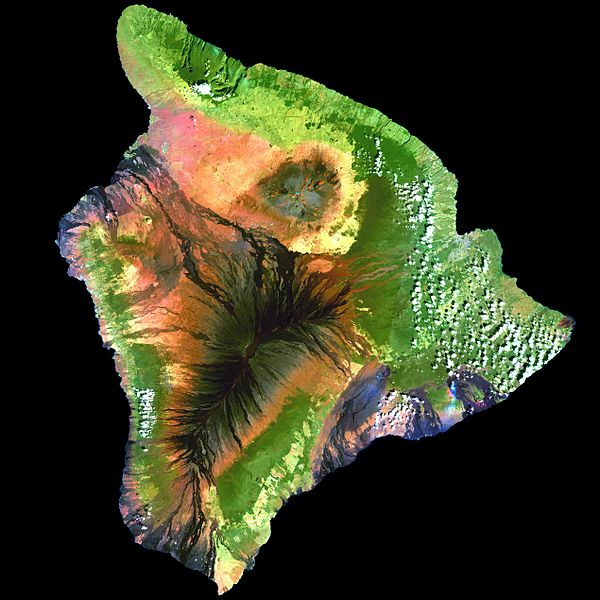Lêer:Island of Hawai'i - Landsat mosaic.jpg

Grootte van hierdie voorskou: 600 × 600 piksels. Ander resolusies: 240 × 240 piksels | 480 × 480 piksels | 768 × 768 piksels | 1 024 × 1 024 piksels | 2 048 × 2 048 piksels | 5 076 × 5 076 piksels.
Oorspronklike lêer (5 076 × 5 076 piksels, lêergrootte: 5,19 MG, MIME-tipe: image/jpeg)
Lêergeskiedenis
Klik op die datum/tyd om te sien hoe die lêer destyds gelyk het.
| Datum/Tyd | Duimnael | Dimensies | Gebruiker | Opmerking | |
|---|---|---|---|---|---|
| huidig | 11:59, 1 September 2009 |  | 5 076 × 5 076 (5,19 MG) | Túrelio | saved with 95% quality (low compression), but without "progressive" option |
| 11:59, 1 September 2009 |  | 5 076 × 5 076 (4,9 MG) | Bidgee | Fix thumbnail generation issue caused by progressive loading. | |
| 11:31, 1 September 2009 |  | 5 076 × 5 076 (4,91 MG) | Rocket000 | reuploading | |
| 11:52, 27 Desember 2007 |  | 5 076 × 5 076 (4,91 MG) | Avenue | {{Information| |Description=This simulated true-color image of the island of Hawai'i was derived from data gathered by the Enhanced Thematic Mapper plus (ETM+) on the Landsat 7 satellite between 1999 and 2001. |Source=[http://veimages.gsfc.nasa.gov/2712/l |
Lêergebruik
Die volgende bladsy gebruik dié lêer:
Globale lêergebruik
Die volgende ander wiki's gebruik hierdie lêer:
- Gebruik in ar.wikipedia.org
- Gebruik in ast.wikipedia.org
- Gebruik in az.wikipedia.org
- Gebruik in be.wikipedia.org
- Gebruik in bn.wikipedia.org
- Gebruik in br.wikipedia.org
- Gebruik in ca.wikipedia.org
- Gebruik in ceb.wikipedia.org
- Gebruik in cy.wikipedia.org
- Gebruik in de.wikipedia.org
- Gebruik in de.wikivoyage.org
- Gebruik in en.wikipedia.org
- Hawaii (island)
- Mauna Loa
- Landsat program
- Geoinformatics
- Puna, Hawaii
- User:Spikebrennan
- Portal:Hawaii/Selected article
- Portal:Hawaii/Selected article/11
- Wikipedia:Featured picture candidates/February-2008
- Wikipedia:Featured picture candidates/Big Island of Hawai'i
- User:Hawaiian Mafia
- User:Aoi/sandbox
- Gebruik in es.wikipedia.org
- Gebruik in es.wikibooks.org
- Gebruik in eu.wikipedia.org
- Gebruik in fa.wikipedia.org
- Gebruik in fr.wikipedia.org
- Gebruik in fr.wikivoyage.org
- Gebruik in ga.wikipedia.org
- Gebruik in haw.wikipedia.org
- Gebruik in he.wikipedia.org
- Gebruik in hi.wikipedia.org
- Gebruik in hu.wikipedia.org
- Gebruik in ia.wikipedia.org
- Gebruik in id.wikipedia.org
- Gebruik in incubator.wikimedia.org
- Gebruik in is.wikipedia.org
- Gebruik in ja.wikipedia.org
- Gebruik in jv.wikipedia.org
Wys meer globale gebruik van die lêer.
